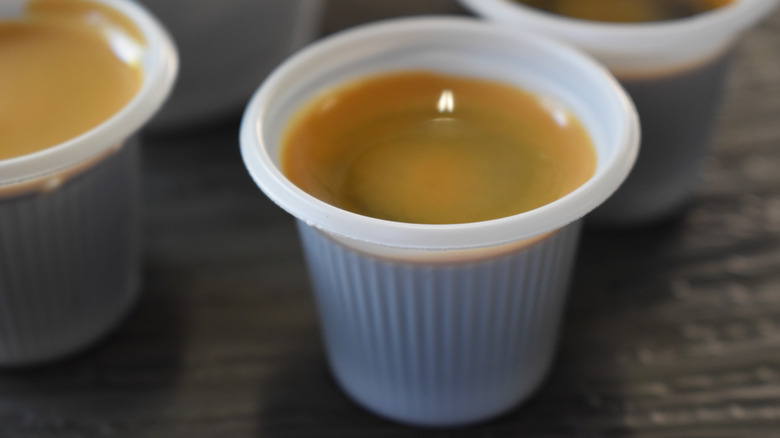Why Is Traditional Cuban Coffee Served In Such Small Cups?
In addition to being a tasty pick-me-up, coffee is a complex cultural phenomenon. From the centuries-old serving traditions of Turkish coffee to the Vietnamese Bạc Xỉu — crafted with condensed milk to save on dairy — a cup of joe can reflect a nation's history, politics, and people.
Such a quality is especially true for the iconic Café Cubano, which stands apart from other whipped coffees. The drink's Cuban origins showcase the island's rich coffee history, which was once in abundant production but decades later fell into shortage. The beverage's consumption out of a small espresso cup resulted due to such scarcity. Cuban coffee is crafted with a moka pot, rather than an espresso machine and brewed extra bold. Such undersized vessels help prolong the coffee-drinking experience by enabling the consumption of several rounds. No surprise such quick hits of flavor became intertwined with the beverage and later integrated into Florida's coffee culture, too. Who wouldn't want another round of such a tasty drink?
Cuban coffee packs intense flavor into small servings
Cuban coffee's small vessels aid in having multiple sessions — after all, the island's coffee culture is a social affair. To deliver an intensely flavored hit, the coffee's crafted with a bold palate in mind, sometimes even cut with chickpeas for added bitterness. Then to smoothen the drinking experience, as well as add a tasty foamy element, the whipped sugar is dolloped on top. Such a small cup aids in drinking the boldly flavored beverage all in one go.
Since the drink is enjoyed right after preparation, the small vessel also functions to keep all elements as hot as possible. The beverage doesn't have the same appeal once cooled, and patrons enjoy stirring in the foam. Much like with espresso culture, the act of preparing and serving the drink is all part of the experience. And what a memorable ritual it is — few coffee drinks match a Cuban coffee in terms of intensity.

